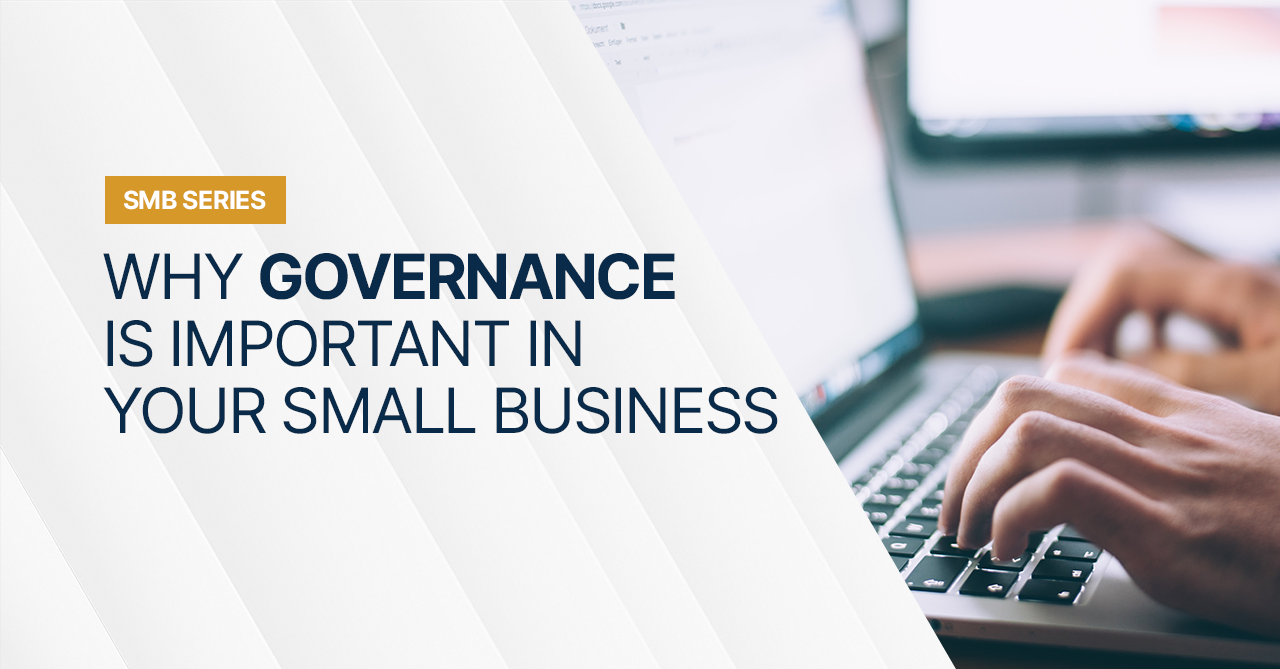
You understand the security risks facing your small business, you’ve implemented the right security tools, but now what?
In our first blog of this SMB Series, Recognizing Cybersecurity Risks in Your Small Business, we discussed the ever-changing cyber threat landscape and noted that the world simply faces an endless horizon of never-ending cybersecurity changes and challenges. While that might seem overwhelming, it also presents a valuable opportunity.
In our second blog, Implementing a Security Practice to Fortify Your Small Business, we noted that companies must have a certain level of compromise; security can no longer be a hard line; it should instead serve as a flexible anchor that holds the whole ship in place while the tides around it move.
Identifying and implementing the right security tools is only half the battle. An organization can require employees to use a password tool, for example, but if the organization doesn’t provide training and follow up that the tool is being used, they are just creating another vulnerability. Implementing the correct controls can reduce the attack surface drastically.
To wrap up this series, we discuss how to ensure your business stays in a defensive position. Businesses face danger at every turn and can’t afford to play games with their security. A healthy compromise requires putting more effort into the governance side and less on the end user.
Governance – validation that ensures teams are properly using tools and following procedures – is the glue that holds the entire approach to mitigating cybersecurity risks together. The adherence to policies is the most important part of a company’s security posture. However, too often, governance is often overlooked and adherence is not achieved. Even with the best tools in the world, if a company is not monitoring adoption they are putting their security defenses at risk.
The goal is to take on a fractional amount of new effort and work while providing exponential value to the end user and the organization.
Fatigue is the Enemy of Security
Almost every organization requires employees to participate in training, whether it’s HIPAA training, company policy training or something similar. These all too familiar “check the box” sessions allow an organization to say they are compliant but provide little to no value to the actual end users when they are not in adherence. Too often, these sessions are mundane, and participants complete them, but they don’t pay attention and certainly don’t retain any of the information. Should they ever need to recall the information and act on it, they likely won’t be able to do so because this information is only used to pass the test.
Participant fatigue can be the downfall of cybersecurity if it doesn’t evolve and become more focused and less user dependent. Security teams should aim to alleviate as much as possible from the end user and centralize those efforts to the security and operations teams.
Admittedly it’s a balancing act – and a tough one at that. The pivot requires leaning on the security team, with the end user taking on less effort to make it all work. And that’s exactly why it’s so important to make the end user’s experience as easy, tailor-made, and as low-risk as possible.
Training Must be Personalized
Training is an essential and, at least for now, an unavoidable element of any cybersecurity program. Instead of doing all the training once a year to check a box on compliance paperwork, companies need to focus the sessions on the participants and tailor it to their roles and responsibilities.
For example, holding a series of lunch and learns versus a singular annual training might help reduce team members’ fatigue from mandatory training. For security awareness training to be effective, it must also be concise, and its success requires that it be targeted and relevant. No one wants to sit through a 45-minute session for material that can be conveyed in 15 minutes, or where the content doesn’t apply to the person’s actual day-to-day job.
So why do companies spend time on ineffective training? Because it’s the easier way. One-size-fits all trainings require less work to build and implement and can be done quickly with limited impact on the end users.
In doing so, they’re inadvertently putting their organizations at risk. This non-customized approach leads to frustration in the security professionals themselves: checking boxes and performing audits and other tests to ensure they properly enforce compliance and security, but often missing the critical details that hide between the checkboxes.
More times than not, training is generalized to cover as many employees as possible with a broad stroke. Across the board, security shouldn’t be judged by how many people a particular session covers but by how well the team retains the information they need to successfully navigate the current business landscape.
Make Security a Team Priority
Security isn’t the only topic of importance to a company. While security is often not as visible as other aspects of a business — whether it’s marketing, education or partner success — it’s as important as anything else the company does.
Security ensures that an organization has a solid foundation for everything it does. Without it, the entire structure is at risk of failing. Your entire organization, not just your security team, is responsible for security at your organization. Building a team mentality around cyber security practices is essential to your success.
As the volume of cyber threats grows, security can no longer be one of those “nice to haves.” It’s imperative for business success. And if it’s set up wrong from a data, process, governance, or training perspective, you could be in for a nasty surprise.
To find out how Liongard supports cybersecurity efforts check out our Security content hub or take a self-guided tour through our platform.